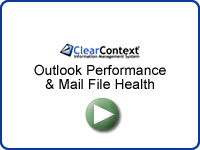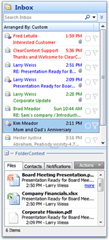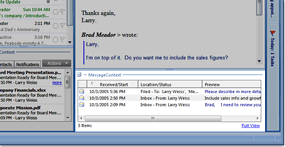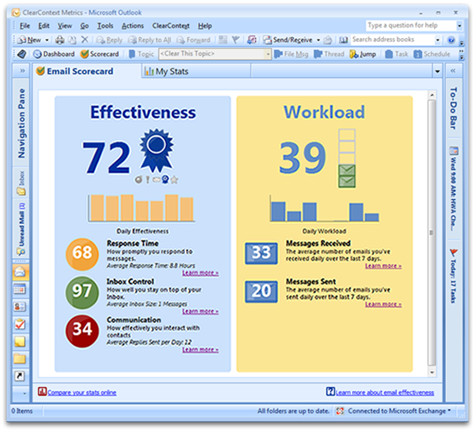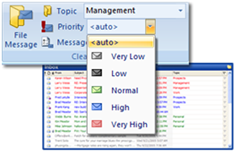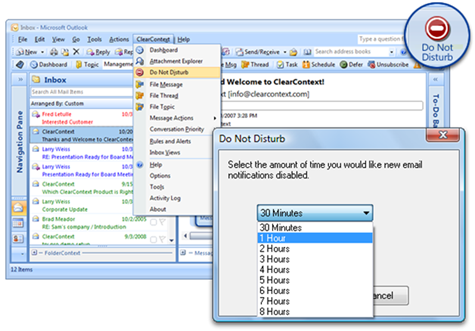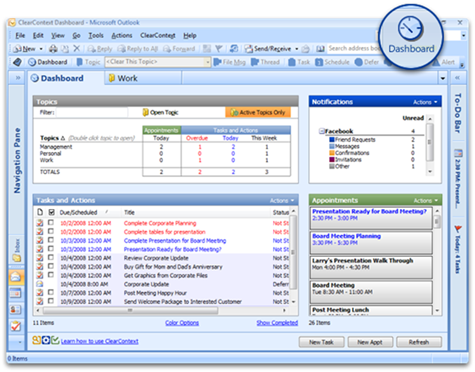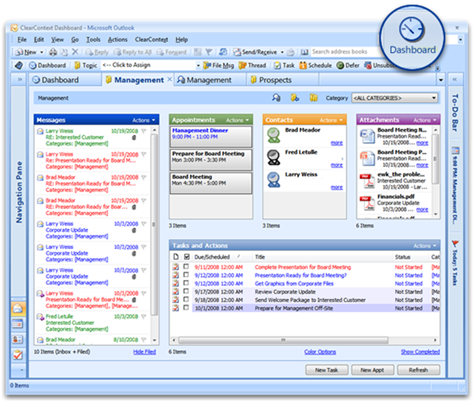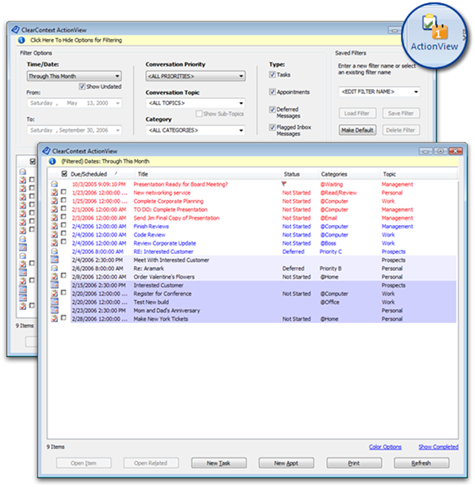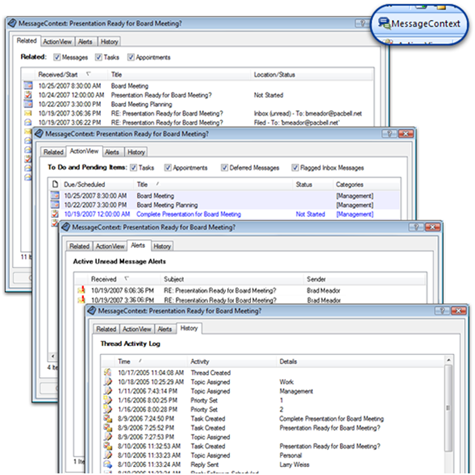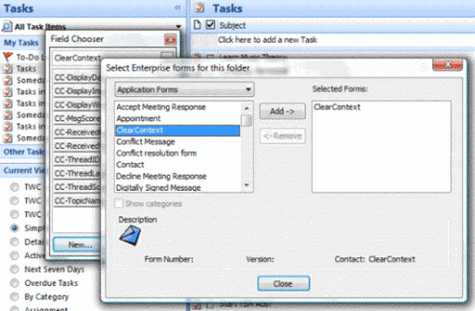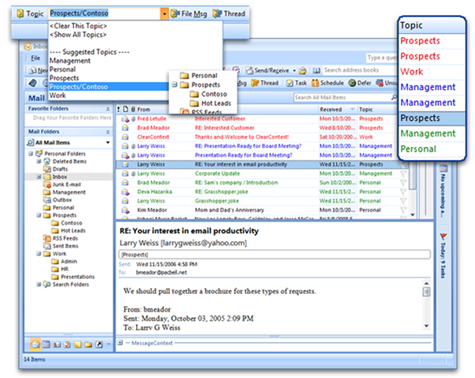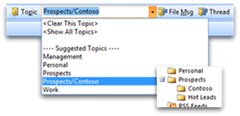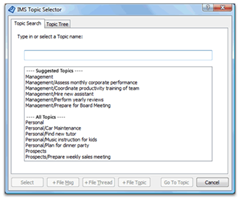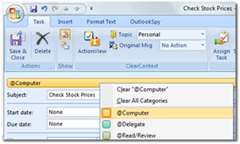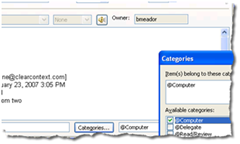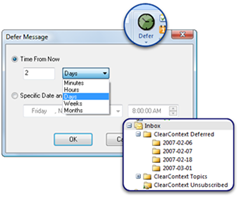Part 2 of our posts on using ClearContext with GTD. Part 1 is here.
Introduction
Many individuals overwhelmed with information take control of Microsoft Outlook by combining ClearContext’s flexible and customizable email management features such as inbox prioritization and automated categorization with their favorite parts of David Allen’s Getting Things Done methodology to create a powerful information management strategy. Below, we outline basic steps many of our customers have taken to set up ClearContext and Microsoft Outlook to support GTD email processing including creation of context-specific action lists, project categorization, creation and maintenance of a “tickler” file, and steps to quickly implement a weekly review. ClearContext also provides email metrics and measurement to help track how well you are handling email. Use this guide to get started – we expect everyone will tweak the system to match their particular information processing requirements.
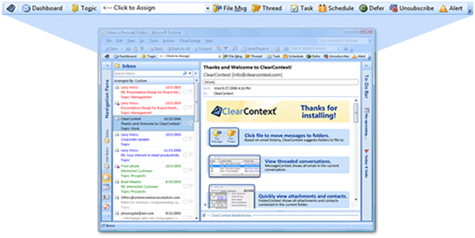
For the purposes of this guide we assume that you have a working knowledge of GTD prior to implementation of ClearContext software. If not, we recommend you visit the Getting Things Done website and find some reference materials to get you started. For an introduction to Getting Things Done, see “What is GTD?”
The process in this whitepaper was developed by ClearContext customers and is the result of real-world use of the product. For detailed discussion on Getting Things Done and ClearContext, see the ClearContext discussion forums. In particular the forum post GTD Users: Start Here contains a collection of GTD-related links.
Overview
In his methodology, David Allen suggests categorizing your email by project and context. Most technology solutions address one or the other well, but do not give a comprehensive way of tracking both. Using ClearContext, Topics can be used to maintain projects and native Outlook categories can be used to denote actions. Actions can then be viewed by project or context using the Dashboard.
Workflow
ClearContext gives several features to process the Inbox quickly and get it to empty. Each button below will automatically file the original message to an associated topic folder and link the item to the current message conversation:

Task opens an Outlook task. Assign an Outlook category to this item to maintain action lists.

Delegate automatically creates either an assigned task or a forwarded message with an associated task for quick delegation to another person.

Schedule creates an appointment with the current message contents.

Defer places the current message in a deferred folder for a given period of time or until a given date. This is an excellent way to create and maintain a “tickler” file.

Filing buttons (File Msg, Thread or Topic) automatically moves messages, conversations, or entire topics/projects of email into associated ClearContext Topic Folders. Use these buttons to archive reference material that does not require one of the actions above.

Followup Message allows the creation of a special task tied to a message conversation. When sending an email, create a follow-up to remind you if you do not receive a response within a specified amount of time. If you do receive a response, the follow-up task is automatically cancelled.

Unsubscribe automatically files current and future messages of a given conversation to either their Topic folder or an unsubscribed folder. This helps remove those long email threads that you have no interest in that are cluttering your Inbox.
Review
In addition, several ClearContext features provide a view across all messages, tasks, and appointments; regardless of location:

MessageContext displays all activity for a given message, task, or appointment. This includes all messages in the current email conversation (the original message and all replies to it) and all appointments and tasks created from the conversation using one of the workflow buttons above.

The Dashboard displays a project view of your data. Drill down into individual projects by opening tabs that display all messages, tasks, appointments, contacts and attachments by Topic. The Dashboard is the control panel for implementation of GTD in ClearContext, providing project centered information within Outlook.

Much like the Dashboard, ActionView displays a list of global To-Do’s (tasks, deferred messages, and appointments) that can be filtered by date, topic, category, and/or priority. The ActionView is perfect for those who want a more robust way to filter and review their task list, providing an efficient vehicle for performing the weekly review.

ClearContext measures your email productivity and presents the results in the Scorecard. The Scorecard helps identify problem areas to work on and shows how you have managed your Inbox size over time.
Next up, Action Management…
GTD and Getting Things Done are registered
trademarks of David Allen & Company.
 We have pushed a minor update to our Outlook client. v4.6.5 addresses the following:
We have pushed a minor update to our Outlook client. v4.6.5 addresses the following: